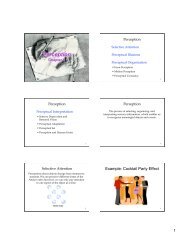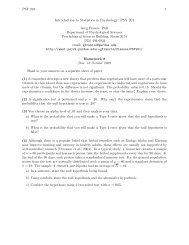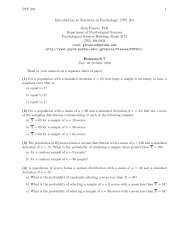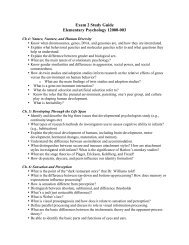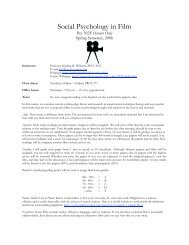Sensation & Perception
Sensation & Perception
Sensation & Perception
You also want an ePaper? Increase the reach of your titles
YUMPU automatically turns print PDFs into web optimized ePapers that Google loves.
Addition of Colors<br />
If three primary colors (lights) are mixed, the<br />
wavelengths are added and the color white is the result.<br />
Opponent Process Theory<br />
Hering proposed that we process four primary<br />
colors combined in pairs of red-green, blue-yellow,<br />
and black-white.<br />
Opponent Colors<br />
Fritz Goro, LIFE magazine, © 1971 Time Warner, Inc.<br />
Cones<br />
Gaze at the middle of the flag for about 30<br />
Seconds. When it disappears, stare at the dot and report<br />
61<br />
Photoreceptors: Trichromatic Theory<br />
MacNichol, Wald and<br />
Brown (1967)<br />
measured directly the<br />
absorption spectra of<br />
visual pigments of<br />
single cones obtained<br />
from the retinas of<br />
humans.<br />
Blue<br />
Cones<br />
Short<br />
wave<br />
Color Blindness<br />
Green<br />
Cones<br />
Medium<br />
wave<br />
Red<br />
Cones<br />
Long<br />
wave<br />
62<br />
Genetic disorder in which people are blind to green or<br />
red colors. This supports the Trichromatic theory.<br />
Retinal<br />
Ganglion<br />
Cells 63<br />
64<br />
Ishihara Test<br />
<strong>Perception</strong> in Brain<br />
Our perceptions are a combination of sensory<br />
(bottom-up) and cognitive (top-down) processes.<br />
whether or not you see Britain's flag. 65<br />
66<br />
11


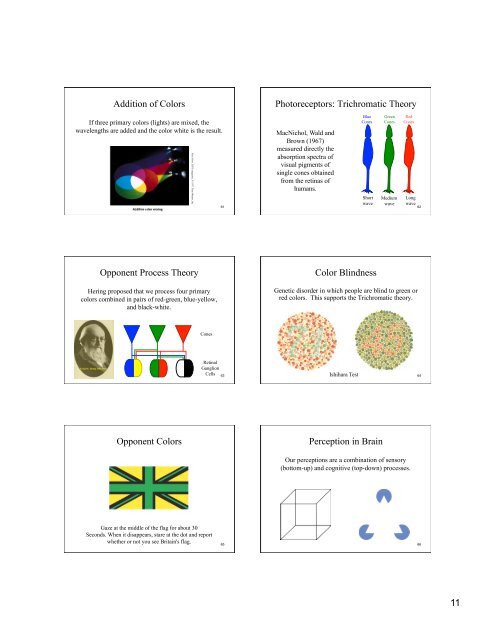
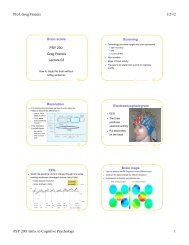

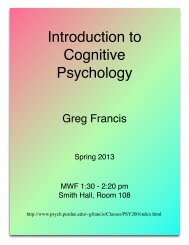

![Exam 4 Study Guide[1]](https://img.yumpu.com/45196739/1/190x245/exam-4-study-guide1.jpg?quality=85)
